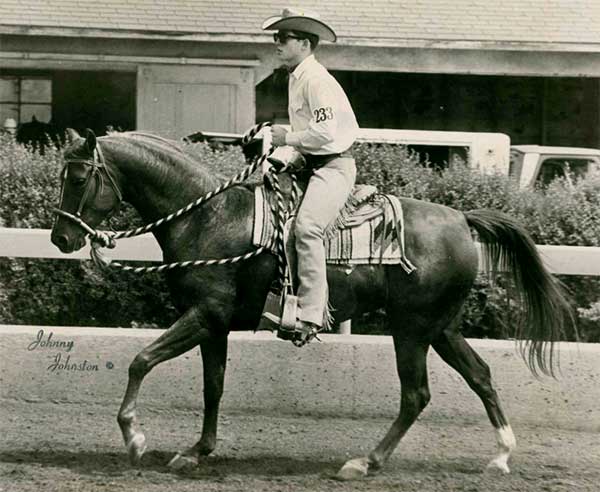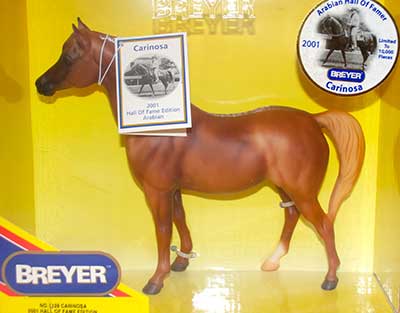
by Attorney, B. Paul Husband
In fact, ideas, in and of themselves, are not protectable by either copyright or trademark.
As Supreme Court Justice Louis Brandeis once said:
"The noblest of human productions -- knowledge, truths ascertained, conceptions, and ideas -- become, after voluntary communication to others, as free as the air to common use."
In other words, at common law, ideas belonged to no one, and therefore the law did not recognize any right of ownership in mere ideas, regardless of how original or valuable they might turn out to be.
This article will address the legal protection which is given to the expression of ideas, that is copyright; to the use of ideas in the form of words, names or symbols used to identify the source of goods or services, that is trademarks, and a few words at the end about some concepts of contract law which might be useful, in some limited circumstances, to protect ideas themselves.
COPYRIGHT
Copyright protects the expression of an idea, and not the idea itself. Copyrights protect: "Original works of authorship". This is the term used in the federal copyright law, and although it is not specifically defined in that law, the phrase clearly would include all manner of writing, drawings, paintings, other two dimensional and three-dimensional works of fine, graphic and applied art, videotapes, films, and various and sundry other items up to and including salt and pepper shakers, chandeliers, door knockers, ink stands and wallpaper.
However, some of the things which are not protected by copyright would include: titles, names, short phrases and slogans, familiar symbols or designs that have not been originated by the author, and mere variations in typographic ornamentation, lettering or coloring, mere listings of ingredients or contents, ideas, procedures, methods, systems, processes, concepts, principles, discoveries, or devices [although a description, explanation or illustration of discoveries or devices would be copyrightable], works that have not been fixed in a tangible form of expression such as an improvisational performance, or multimedia show that has not been recorded.
What is a copyright?
A copyright is actually a bundle of rights which are recognized under federal law. These rights grant to the owner of the copyright the exclusive right to do and to authorize others to do the following things:
- to reproduce the copyrighted work;
- to prepare derivative works based upon the copyrighted work;
- to distribute copies of the copyrighted work to the public by sale or other transfer of ownership, or by rental, lease or lending;
- to perform the copyrighted work publicly for example, motion pictures and other audiovisual works;
- to display the copyrighted work publicly for example, individual images of a motion picture or other audiovisual work.
How do you get a copyright?
Under our present copyright law, which is a federal law known as the Copyright Act of 1976, which became effective as of January 1, 1978, as soon as a work is "fixed in a tangible medium of expression" a federal statutory copyright belongs to the author. For copyright purposes, an artist who draws is an "author".
Is it essential that one use a notice of copyright to protect one's copyright?
The correct answer to this question is: "No", although it is a very good idea to use a notice of copyright. Technically, since the United States joined the Berne Convention, an international copyright treaty in 1989, the United States law was modified to delete the mandatory copyright notice. However, if you create a work and fail to put a notice on it, someone who infringes your work may escape liability as an innocent infringer. A copyright notice basically consists of the word "copyright" or ©, the year of creation and the name of the copyright claimant. The copyright needs to be placed where it is likely to be seen. On a literary work or script, it is usually on the first or second page, or sometimes the last page. On paintings, usually somewhere on the front or back of the painting, and in motion pictures or videotapes, usually at the beginning or end of the work. The © symbol is slightly more advantageous than the word "copyright", since the © symbol also complies with the Universal Copyright Convention, which entitles the artist to certain additional international rights.
Must a copyright be registered to be valid?
The answer to this question is "no". However, the benefits of copyright registration include the following:
- In the event of an infringement, statutory damages cannot be recovered for infringement of unregistered copyrights.
- Registration of a copyright is a prerequisite to a copyright infringement suit.
- Registration establishes a public record of the copyright claim, and gives the copyright owner an official document which can be a very useful tool against potential infringers.
- Registration establishes prima facie evidence in court of the validity of the copyright and of the facts stated in the copyright registration certificate, provided that the registration is made either before publication, or within five years of publication.
Won't filing a copy with the Writers Guild be just as good?
No. Registration with the Writers Guild is good evidence of when you created the work, but it does not entitle you to a prima facie case in court, nor will it entitle you to statutory damages.
TRADEMARK
A trademark is a work, name, symbol or device or any combination thereof that identifies its owner. Trademarks can include slogans, numerals, pictures and/or letters. Unlike copyright, which is exclusively a federal law, trademark protection can be obtained under both federal law and state law. The primary. federal law is known as the Lanhan Act, which will protect both trademarks, and also service marks. A service mark is a mark used in the sale or advertising of services to identify the services of one person or to distinguish them from the services of others. Titles, character names, and other distinctive features or radio or television programs may be registered as service marks.
Are all trademarks created equal?
No. Some trademarks are stronger than others. Weaker marks are given less protection than stronger marks. The strength categorizations from weakest to strongest are: (a) generic (the name of a particular class of things); (b) descriptive (the mark that describes the product or the service itself); (c) suggestive (the mark describes or suggests a characteristic of the product or service); (d) arbitrary (the mark is a word in common use but is applied to a product or service unrelated to its meaning, e.g. Apple Computer, so that the word neither describes nor suggests the product or service); or (e) coined or fanciful (the mark is a word devised or invented for the purpose of identifying the product or service). A generic name, such as desk, chair, piano, etc. is virtually unprotectable and unregisterable. The more distinctive and fanciful the name, the more protection it will be accorded. For example, Tide detergent is an arbitrary mark, and therefore entitled to strong protection; Glickzorp Donuts would be a fanciful name, and therefore entitled to even stronger protection.
Another factor concerning the distinctiveness of the mark is evidence that the mark has gained secondary meaning. A literary title, for example, requires proof of secondary meaning before it becomes protectable. Secondary meaning arises when the mark becomes associated in the public mind as the source of a particular product or service.
The Lanham Act proscribes registration and protection of marks that are merely descriptive, geographic or a surname, unless such marks have attained secondary meaning.
The Lanham Act proscribes entirely, regardless of secondary meaning, marks which are immoral, slanderous, disparaging of persons, beliefs or national symbols, embody a flag, or consist of the name, portrait or signature of a living individual, without his or her consent, or a deceased president of the United States during the life of his widow, without her written consent.
The owner of a mark involving a surname which has acquired a secondary meaning can receive protection, however, a second person of the same surname may be entitled to use his or her surname with a disclaimer of non-affiliation with the mark's owner. For example, a person whose surname is Lawry may still operate and advertise a hamburger stand called Lawry's with a disclaimer from the more famous restaurant row Lawry's.
The basic right of trademark is the exclusive right to use the registered mark in commerce in connection with the product or services specified in the registration and subject to any conditions or limitations stated in the registration. The same rights will also apply to unregistered marks.
Exclusive Rights
Rights in a trademark generally arise as a matter of use of the mark in commerce (although under present law there is the possibility of federal registration on a prospective basis under the "intent to use" registration).
Territory
Federal trademark law generally assumes national effectiveness. However, if prior to federal registration, two or more parties have used the same mark in different territories, each mark owner may obtain federal registration concurrently, with each party's right resting in their own geographic area of use. This is a distinct contrast to copyright.
Specific to products or services used in connection
Another limitation, in addition to territory, exists concerning what products or services are identified with the mark. The owner is given a protectable exclusive right to use the mark in association with an identified product or service.
Creation by use
A trademark is created, both under common law and also under the Lanham Act by the use of the mark in commerce in association with the goods or services so that the mark becomes associated with the mark and/or creator of the goods or services. Use in commerce requires that the mark be affixed in a tangible form on the goods, containers, or displays or in advertising associated with the goods or services. This would, for example, include a title or character distributed for sale in the form of a book or movie. For protection to commence, there is the added requirement that the mark become associated in the public's mind with the source of those goods or services. Generally, the use of an identifiable trademark (particularly one that is novel or fanciful) immediately establishes protectable rights (particularly with novel or fanciful marks). Other marks may create some negligible protection (e.g. merely "descriptive" marks) until secondary meaning has attached. For example, Glickzorp Soda is a fanciful mark and strong rights would attach immediately. "Bubbly Soda" is a descriptive mark and would have very weak rights unless and until it established secondary meaning.
Who owns a trademark?
Ownership of trademark ordinarily vests in the first person or entity to use the mark in commerce.
Registration
A trademark may be valuable whether or not it is registered, but, not surprisingly, additional rights, such as attorney's fees in the event of an infringement suit are available to registered trademark owners.
A mark may be registered in one of the Federal Registers by filing a written application including verified statements of when the mark was first used in commerce (or proposed first use), the goods or services in connection with which it was (or will be) used, a drawing of the mark plus specimens (or facsimiles) of the mark as used (or proposed to be used) as required by the Trademark Office and payment of the required fee.
After the application is received, the mark is examined by the Commissioner of Patents and Trademarks to evaluate whether or not it can be registered and the mark is published in the Official Gazette of the Patent and Trademark Office.
After publication, the mark is subject to opposition of any person who believes that he or she may be damaged by the issuance of the registration. The Commissioner evaluates any such claims and the validity of the proposed registration. In the event of disputes, both administrative and judicial review are available.</p;>
There are two Registers, a Principal and a Supplemental Register. Stronger marks will be registered in the Principal Register, and the chief difference is that the Principal Register can be used to block importation of goods bearing an infringing mark, and it is considered nationwide constructive notice.
Notice
There is no requirement that notice be given to the public of the trademark. If no notice is placed on the goods, then no profits or damages would be recoverable in an infringement action unless the infringer had actual notice of the registration. For an unregistered mark, the symbol "TM " (for trademark) or “SM” (for service mark) are used. For a registered mark, generally ® is used.
Term
Unlike copyright, trademark can last indefinitely. Registration must be renewed from time to time, but if it is properly renewed and used, trademark can last forever.
Licenses
If a trademark is licensed, the license must be in writing, and must include provisions to insure the maintenance of a certain level of quality by the licensee as determined by the owner.
PROTECTION OF IDEAS
This is tough. There can be some protection of ideas, by either contract, or quasicontract. As a matter of law, the law school example of the "envelope within an envelope" can suffice to create a contract under which submission of an idea would protect the submitter. Under the "envelope within a envelope", the idea would be enclosed is a small sealed envelope, then the small sealed envelope enclosed within a large envelope. The large envelope would also include a letter to the idea recipient which would say something along the following lines:
"Dear Ms. Studio Mogul:
In the sealed envelope which is enclosed with this letter, there is a concept for an animated motion picture [or whatever] which I believe is very valuable. If you agree to pay me the reasonable value of the use of my idea should you use it, please open the enclosed, sealed, smaller envelope. If not, please return the enclosed sealed envelope unopened.
Believe me, this idea can make you millions you are going to love it! ! !
Yours very truly,
Naive N. Hopeful"
As a practical matter, it is highly unlikely that any executive, at least in Los Angeles, would proceed to open the smaller envelope. Nonetheless, such an arrangement would establish a contract between the idea recipient and the idea submitter so that if the idea recipient were to use the idea submitter's idea, the idea recipient would be contractually liable to pay the idea submitter the reasonable value of the idea.
Other variations on this theme may manifest that an idea recipient was aware that an idea submission was made under circumstances which made it clear that compensation was expected if the idea was used, and thus establishes either an actual contract, or a quasi-contract (legal language for there isn't really a contract here, but for policy reasons we will pretend that there is a contract). Use of an agent or an attorney to submit may be a part of such circumstances.


Paul Husband has raised, shown and raced Arabian horses for most of his life, served for 20 years as an American Horse Shows Association Judge, has published numerous tax and equine law articles, reports and publications and is a sought-after public speaker at local and national events.
He has been a member of the Board of Advisors and Contributors to The American Horse Council Tax Bulletin, is a member of the Graded Stakes Committee of the Arabian Jockey Club and is Vice President and a Director of the American College of Equine Attorneys.
































